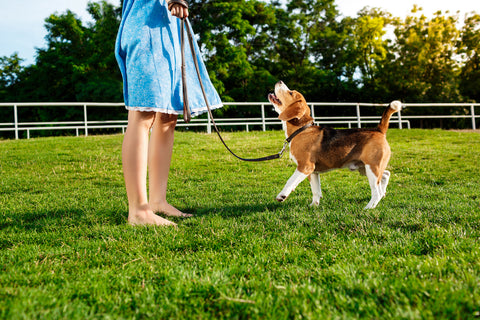Training types
- Positive Reinforcement
- The idea of positive reinforcement is quite straightforward – behavior will be repeated if rewarded. That essentially gives your dog the power to make the decision if they want to pursue something in their environment or will concentrate on you and get rewarded. This method requires consistency as you’ll only be rewarding good behavior and leave bad behavior unrewarded and ignored. This makes correcting unwanted behavior a more challenging task as it will likely take longer periods of time to achieve it and harsh reprimands and force are not encouraged and not necessary.
- Clicker Training - uses a clicker to signal to the dog exactly in the moment when he performs a command well.
- Mirror Training / Model-Rival Training - encourages a dog to mirror good behavior and discourage bad behavior.
- Dominance or Alpha Dog Training Type
- The alpha dog training method relies on the idea of a dog’s instinctive pack mentality and looks to create a relationship of submission and dominance between the dog and its owner. This method was popularized by Cezar Millan and it states that the alpha of the pack (family) has to remind the dog of their place in the pack. For example, a dog should never sit on the furniture with their humans and playing with a dog on the floor is frowned upon as it creates the impression that humans and dogs are on the same level.
- Electronic Method: The electronic method refers to using an electric collar that either sends an electric shock or releases a puff of citronella when activated. This method is meant to show a dog what not to do and it is mainly used when a leash cannot be used. The use of e-collars is illegal in some countries so check your region’s rules before opting for this type of training.
- Mixed Training Type
- Relationship-Based Training - This training method is a combination of other training methods each used based on the body language / relationship of the dog and their owners and its personalized on the personalities and goals of each training couple.
- Scientific Training - guides itself by latest scientific discoveries.
Choosing A Trainer
We believe in and have used positive reinforcement to train Henry and don't have experience with other methods.
However, in terms of looking for the right trainer for yourself there are a couple of things we'd recommend to look out for:
- Training type / style - the most important factor will be looking for a trainer that uses a training style you prefer. Usually all trainers mention on their websites or social media pages their preferred training method so it should be easy to find out.
- Location - choosing a trainer that is easily accessible will make your pre-and post-training session trip easier. There's an added bonus if the location has indoor and outdoor training facilities.
- Personal connection to trainer - make sure to get a feeling of the trainer that you'll be working with. It's important to feel and see that your trainer cares and start building a relationship. The trainer will be able to point out behavior improvements in you as well as your pup so you might want to find someone whom you respect enough to take their feedback.
Training Courses
Many trainers offer individual courses as well as group courses.
Individual sessions are generally a great opportunity to have the trainers focus on you and your pooch. Sometimes the trainers might even bring their own dogs or best behaving dogs to the training session depending on what your focus area is.
Group courses are particularly beneficial for dogs who need to learn in a safe space to focus on their owners when there's plenty distraction around. Leash training in group sessions have been tremendously helpful for Henry to learn not to pull to other dogs while on a leash.
As with all other things, you will know what is best for your pooch. You know your pup best and will now have the ability to make the decision that suits you best.
If you have any questions or want more in-depth information, feel free to reach out to us at hellp@beansandbuttons.com and we'll happily share more from our experiences!



Comments (0)
There are no comments for this article. Be the first one to leave a message!